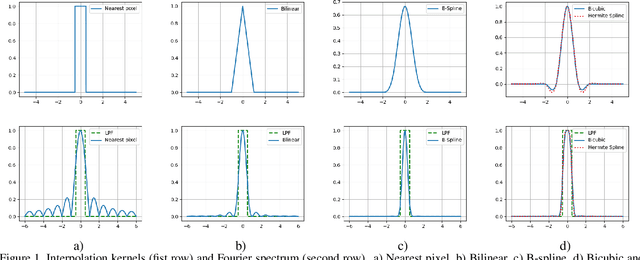The Analysis of Projective Transformation Algorithms for Image Recognition on Mobile Devices
Paper and Code
Dec 03, 2019



In this work we apply commonly known methods of non-adaptive interpolation (nearest pixel, bilinear, B-spline, bicubic, Hermite spline) and sampling (point sampling, supersampling, mip-map pre-filtering, rip-map pre-filtering and FAST) to the problem of projective image transformation. We compare their computational complexity, describe their artifacts and than experimentally measure their quality and working time on mobile processor with ARM architecture. Those methods were widely developed in the 90s and early 2000s, but were not in an area of active research in resent years due to a lower need in computationally efficient algorithms. However, real-time mobile recognition systems, which collect more and more attention, do not only require fast projective transform methods, but also demand high quality images without artifacts. As a result, in this work we choose methods appropriate for those systems, which allow to avoid artifacts, while preserving low computational complexity. Based on the experimental results for our setting they are bilinear interpolation combined with either mip-map pre-filtering or FAST sampling, but could be modified for specific use cases.
 Add to Chrome
Add to Chrome Add to Firefox
Add to Firefox Add to Edge
Add to Edge